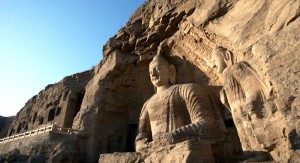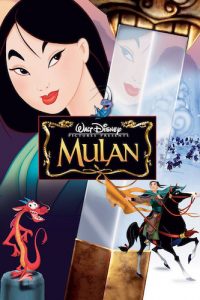
Like the Jin Dynasty (265-420), the Northern and Southern Dynasties Period was a time of great cultural enlightenment and progression. During this time, China saw a large and steady influx of foreign immigrants from the west, most of whom were tradesmen or Buddhist monks from Central Asia. A number of these monks settled in northern China and Buddhism progressively became one of the most popular religions among imperials of the Northern Wei Dynasty (386–535). Thanks to their patronage and support, the Yungang Grottoes at Datong in Shanxi province, the Longmen Grottoes at Luoyang in Henan province, and the Hanging Temple at Hengshan in Shaanxi province were all constructed.
Along with these advancements in Buddhist art, the religion of Taoism also developed dramatically thanks to outstanding Taoist reformers such as Kou Qianzhi, Lu Jingxiu, and Tao Hongjing. It was Kou Qianzhi who made the most headway of the three, as he simplified several complicated Taoist rites and managed to recruit followers from noble families, which was of landmark significance to the religion.
However, one of the most popular trends in thought was the philosophy of xuanxue or “dark learning”, which was particularly prevalent in the south of China. This complex set of beliefs was based primarily on three Taoist texts: the Zhouyi, the Tao Te Ching, and the Zhuangzi. Followers of xuanxue were preoccupied with ontological and metaphysical problems, but tackled these issues by incorporating ancient Chinese philosophies into their thinking. The idea was founded on the assumption that anything nameable, such as movement, change, and diversity, sprang from and was sustained by one detached principle, which was by definition unlimited, unnameable, unmoving, and unchanging.
It reached such a level of renown that Emperor Wen of the Liu Song Dynasty (420–479) even established a Xuanxue Academy and avidly promoted it as one of the Four Great Subjects of Study, along with Confucianism, literature, and history. Coupled with this was a phenomenon known as qingtan or “pure conversation”, where educated men would meet and talk about philosophical topics all day with no regard for the “mundane” matters of life such as their profession and family. They’d call it “scholarly”; we’d call it shirking responsibility!
With these philosophical advancements came further advances in political thought. Since Confucianism’s unchallenged grip on the country had gradually weakened after the collapse of the Han Dynasty (206 BC–220 AD), exceptional political thinkers like Fan Zhen, Xing Shao, and Fan Xun were able to come to the fore and advocate other, more practical systems of governance and administration. That being said, the bleak and unstable political atmosphere at the time led to much of this philosophy being despondent and dispirited, prompting many scholars and poets to become recluses and mountain hermits. If you can’t hide your head in the sand, apparently a mountain is the next best thing!

Literature also blossomed in both the Southern and Northern dynasties, although styles in the Southern Dynasties tended to be more flowery and intricate while in the Northern Dynasties they were rougher and more straightforward. Notable writers of the Northern Dynasties included Yu Xin, Xing Fang, Wei Shou, and Wen Zisheng. In the Southern Dynasties, a type of literary style known as pianwen, which dated all the way back to the Zhou Dynasty (c. 1045-256 BC), enjoyed a resurgence in popularity. It was characterised by its metered rhyme, eloquent language, and classical allusions, and was frequently used in official writings of the Southern Dynasties.
Yet perhaps the greatest cultural reform of all came thanks to Emperor Xiaowen of the Northern Wei Dynasty. Although he was of dual Tuoba-Chinese heritage, he embarked on a Sinification campaign in which he dictated that all Tuoba tribesmen must abandon their traditional dress and many of their customs in favour of Han Chinese traditions. In this way, diplomatic connections between the Tuoba people of northern China and the Han Chinese people who had settled in southern China were eased. Meanwhile, the large-scale southern migration of Han Chinese immigrants led to the eventual Sinification of south China’s indigenous peoples. It was this cultural exchange and amalgamation between the north and the south that greatly contributed to the Sui Dynasty’s (581-618) successful reunification of the country in 589.